My earliest childhood recollection is of my mother pushing me in a pram and stopping at the level crossing in South Street, Bourne, Lincolnshire. What I now know was a tank engine, crossed over the road and then went back towards the station. I must have only been 12–18 months old at the time, but that image left a lasting impression on me.
Other happy recollections are of visiting my grandmother in the hamlet of Twenty and sitting on the crossing gates as the signalman swung them open for a passing steam train. When I was only 7 years old I won a 2/6 (2 shillings and sixpence for the younger readers) National Savings stamp for a painting competition at school and my subject? Yes, a steam passenger train rushing past the gates near my grandmother’s. Although this too was of a child’s recollection, as the line had closed to passengers two years before in 1959.
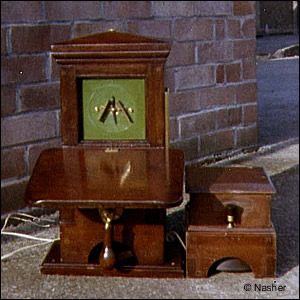
Bourne only had goods trains after 1959, and then only a few at that. But most days I would rush home from school and go to the hand crossing gates in Mill Drove, Bourne, and somewhat naughtily place stones on the track and watch them crushed by the daily mail train to Billingborough, which consisted of a diesel shunter and one mail coach.
All the lines through Bourne were finally closed to goods traffic in 1964 and I remember in 1965 our schoolteacher at Bourne Abbey Primary School allowing us to watch as the railway bridge was dismantled across Abbey Road.
With no trains to see in Bourne I forgot about railways until one Saturday in October 1966 when my Dad, who was about to go to work, unexpectedly said, “Do you want to go train-spotting?” I quickly said, “Yes”, and went with him. My dad was working at DowMacs, which was right next to the east coast main line at Tallington. I was 12 years old and that first day of train-spotting was a bit of a learning curve. Although I knew I had this love of railways and trains I had never actually train-spotted before and had no books on the subject. So as the trains went by I wrote down their ‘numbers’ – 1A10, 1S12, 5A16 etc. I did this for about 3 hours and had seen about 15 trains, when a couple of boys came up and asked me what I’d seen running that morning. I showed them my ‘numbers’ and they both burst out laughing. They told me that I had only recorded the headcode of the train and not the number after all. The headcode was at the front of the train and actually indicated what the train was and where it was going, whereas the number was at the side of the train.
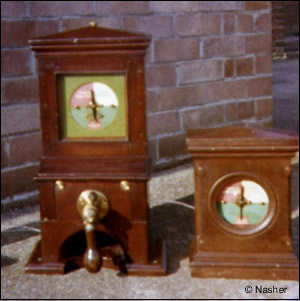
The two lads then showed me their ‘Combine’, the bible for train-spotters which listed all the remaining steam engines and all the diesel engines used by British Railways, which described what they all were and how powerful each one was. That was it, I was now totally hooked and reborn as a train-spotter.
I was so looking forward to seeing steam engines thundering up the east coast main line, only to be told that steam had finished on the Eastern region in 1965, so that all trains hauled through Tallington were now diesel. If I wanted to see steam I would have had to have travelled to the North West which was the last outpost for steam in Britain, before it finally finished in August 1968.
I do, however, remember cycling to Peterborough a few times to see ‘Steam Specials’. One hauled by the ‘Flying Scotsman’ and then another hauled by ‘Clun Castle’.
My Dad continued to take me to Tallington for a few more years until eventually my parents deemed me to be ‘old enough’ to venture out on my own. So during school summer holidays and Saturdays in school terms I regularly cycled to Peterborough to go train-spotting, but it was 16 miles each way, so I soon started to cycle to Essendine as that was only 6 miles each way. Essendine, on the east coast main line, almost became my second home. The old goods dock there was a great place to go train-spotting, as the signal box controlled quite a large array of Semaphore signals (Semaphore signals for the train-spotter are really helpful as you can tell if a train is coming from either direction whether you are in front of or behind the signal. Modern day colour light signals, unfortunately, only tell you if a train is coming when you are in front of the signal).
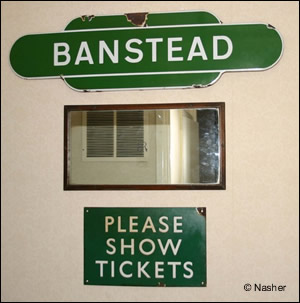
One day, whilst sat on the dock at Essendine, Pete, the signalman, asked me if I would like to see in the box. “Oh! Yes!!”, I said. From then on, but only on his shift, whilst I was at Essendine I spent the time in the signal box. It was fantastic. The box was gleaming as all the signalmen took great pride in their boxes. All the block instruments and all brasses were polished beautifully and even the floor was all spick-and-span. He let me have a go at pulling the levers, but I didn’t have the strength or technique, so could only manage some of the short pulls (which were the signals closer to the box). If he ever went out of the box and one of the bells clanged, Pete would ask me which line it was for, but I could never tell. They all sounded the same to me. Essendine was a 4 track railway which meant that each line had its own set of block instruments and bells and each bell had a slightly different tone. Even if Pete was outside he would know instantly which line had been belled. I became great friends with him and his wife Janet, as I would often go back to their house for a cup of tea before cycling home.
On one occasion, after a day’s train-spotting, Pete asked me if I would like a set of old signalling block instruments, because he wanted rid of them as they cluttered the house. I wasn’t going to say no, was I? That started my railwayana collection.
I then decided I would see if there were any old signs on the closed lines running out of Bourne, and I would cycle along these bumpy byways. I did find a few and ‘acquired’ them. I was just a 15 year old boy at the time and didn’t really see any wrong in it. For the record, I do know now it was wrong, but back then in 1969, the railway had been shut for 5 years and the railway company hadn’t bothered to reclaim the signs. So really I was an early pioneer of recycling!!
I spent hours chipping all the old paintwork from the signs and cleaning them up. They looked really good. Then, just as my collection was taking off, my dad told me to get rid of the signs as they were cluttering up the garage. I answered an advert in a railway magazine and a railwayana collector came and had a look at the signs and gave me, what I thought at the time, was a good price for them. Only in hindsight and knowing now how rare full size Midland and Great Northern Joint Railway signs are, do I know that the guy totally ripped me off. My days as a collector and dealer in railwayana stopped almost as quickly as they had started.
I then joined the Peterborough Railway Society (PRS) and was one of its very early members. Back then in 1970/1, it was still a pipe dream for the Peterborough Railway Society to actually open a railway and run it, but that is exactly what they did, when with the aid of Peterborough District Council they leased the railway line from Peterborough to Wansford and formed the Nene Valley Railway. The rest for them is history.
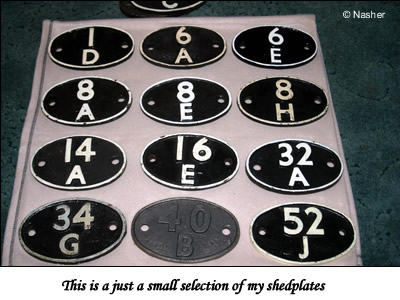
In the early days, the PRS held open days at the British Sugar Company railway sidings and to raise funds it would give visitors footplate rides up and down the sidings on either the BR Standard 5MT No.73050 or one of its tank engines. Of course, the PRS had the original ‘Thomas the Tank Engine’, and I well remember the day when the character’s creator, Reverend Audrey, visited the BSC sidings and named the engine ‘Thomas’. My job always seemed to be on the ticket gate selling entrance tickets. I spent many hours in that tiny ticket booth, but I was doing my bit for the railway.
When the society had become the ‘Nene Valley Railway’ and plans were afoot for operating the railway, they asked for members to volunteer to be trained for various posts. I decided I would volunteer to be trained as a signalman, but in 1973 I left school and moved to Frodsham in Cheshire and started work at ICI Ltd in Runcorn. I never did get to work on the Nene Valley Railway.
Now I was working and earning money, my train-spotting and subsequent rail travel to do the spotting took off in a big way. In 1974 my rail travel for spotting totalled 13825.75 miles. Every mile was always recorded. This continued for a few years, but tailed off towards the late 1970’s as foreign holidays and young ladies took over. Marriage followed in 1979 and then children in 1980 and 1982, and that seemed an end to my love affair with the railways. Well a temporary end, anyway!
Changes of career from being a research scientist at ICI to publican in 1988, pushed railways even further down my priority list. Railways were still there, though and I kept up to date by reading railway magazines and very occasionally I had a trip out on the trains.
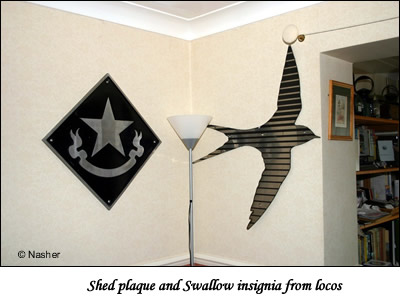
Divorce saw the end of the pub trade and a short spell out of work gave me the time to rekindle my railway interest. A further career change in 1992 to a senior development technician at the European container technical centre for Darex UK, a part of W.R. Grace Ltd in St. Neots, then gave me spare money again to spend on my rail interests.
The railway scene was now changing quite fast with the decline of loco-hauled passenger trains in favour of multiple unit trains, and many of the older first generation of diesel locomotives were being withdrawn. These ‘locos’ were my first railway love and were what I called ‘real Locos’. I then started filming and travelling to anywhere that was using loco-hauled passenger trains, so that I could catch their last days. After all, I had missed the last days of steam so I wasn’t going to miss the last days of loco hauled passenger trains.
At the same time I started to go slightly wild on eBay buying railwayana (railway memorabilia) or visiting railway company open days, especially if they were selling items of rail interest. Initially I would buy almost anything, but have since started to specialise in shed plates and carriage prints. The shed plates are small 7 inch oval plates that were fixed to each steam engine to identify which railway shed it was based at. These are items that are still readily available and don’t take up too much storage room. They can vary in price from £80 to over £1000 for very rare plates, but the majority are valued between £120 – £180.
To continue my story and in a real turn of unexpected events, the American parent company of Darex UK decided to close our European technical centre here in St Neots and relocate it to France with a much smaller workforce. The terms offered were for full emigration, but not a single employee accepted them, so were all made redundant in 1999. Six staff were kept on longer than the rest (I was one of them), and we commuted to France for 6 months to set up the new research facility. My last day of work was 31st December 1999 – what a welcome for the New Millennium!
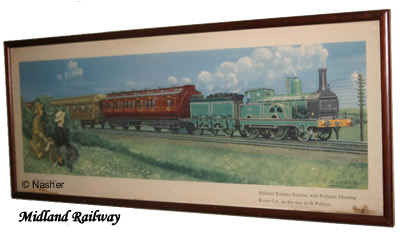
As a middle aged man it was difficult to get well paid work in the science industries as most companies like to take on new graduates at much lower rates of pay. So I decided to broaden my horizons and among the many job applications I was looking at, I saw one that I then applied for with ‘tongue in cheek’. Amazingly, after going through the three interview stages I got the job, went through all the training and started my career with Railtrack in 2000 as a signaller (we’re not called signalman anymore as it isn’t PC) in a large power signal box at West Hampstead in London.
I’m still there now, some 9 years later, although of course we are now called Network Rail. Our box has 28 signallers with 5 on shift at a time, and we control the Midland main line from St Pancras to 11 miles north of Bedford, a total of 61 miles. It’s odd the way things turn out, isn’t it?
In 2003 I moved house and began to adorn many of my walls with my railway memorabilia, although when my children and grandchildren visit they all detest it and think I am very sad! My daughter says she would take great delight in throwing all of my railway items in the bin. I keep telling them that this is their inheritance and they will be grateful one day. I don’t think they are convinced even though I’ve told them that the full collection is now worth between £10,000 to £15,000.
Other items that I have collected over the years are station totem signs and other enamel signs, various route maps from carriages and a large number of aluminium double arrow, swallow and shed plaque insignia from the side of locos. Some of my favourite items are the original carriage prints that were once common in every carriage compartment of all the Railway Companies, and I especially like the C. Hamilton Ellis prints of travel through the ages.
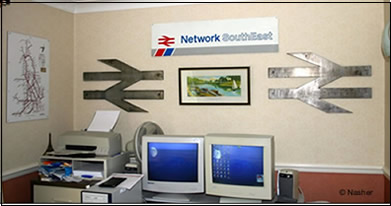 | 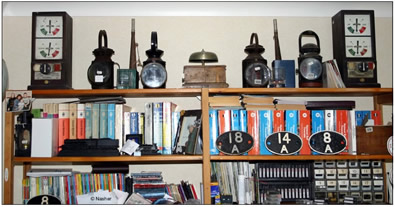 |
Besides the collection that is pictured here my garage is full of signals, more station enamel signs such as ‘Gentleman’, ‘Ladies’, ‘Way Out’, ‘Platform 1’ etc. I also have old, as well as more modern, regional railway station signs, signalling token holders, signal number plates, and cast iron signs from the Great Western Railway, London North Eastern Railway and Southern Railway. Additional to all of this are the countless number of old timetables, station posters, railway badges, modern day railway collectables from the privatised railway companies etc.
I am still collecting railwayana, but I hardly ever go out travelling by train for pleasure anymore, probably partly because I commute to London by rail every day. I do still film, when the opportunity arises, and I did have a DVD published in 2006:- Class 37 Loco Hauled Passenger Services in Wales, The North Wales Coast and South Wales Rhymney Services.
Nasher
© Nasher 2009